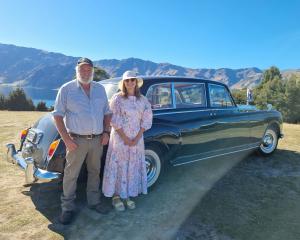
Guardians of Lake Hāwea incoming chairwoman Jane Forsyth, a retired geologist and science publication editor, said a diver took a sample for the Guardians at the inlet close to the Hāwea Dam, last month.
She has checked the weed against photographs and determined it is the invasive aquarium plant, elodea canadensis, which first arrived in New Zealand in the 19th century.
"I haven’t sent it off for analysis as I am confident in my ID," Ms Forsyth said on Monday.
Ms Forsyth understood National Institute Water and Atmospheric Research (Niwa) had previously found elodea in the lake but was not sure where.
"I know for sure that the Anzac peninsula/grebe platform site is a new site for the weed as it wasn’t a Niwa sample site.
"Also that inlet dries out most winters so the weed cannot have been there long," Ms Forsyth said, estimating "two years max".
Elodea canadensis was introduced from North America and to the untrained eye can look similar to lagarosiphon.
Ms Forsyth said elodea canadensis leaves appear in whorls of three on the plant stem. This was diagnostic. The leaves were less recurved (curled downward) than lagarosiphon, she said.
Niwa fresh-water scientists Deborah Hofstra and Mary deWinton said on Tuesday elodea was first recorded by Niwa in Lake Hāwea in December 1992.
It was described by the late scientist John Clayton in 1993 as in a "flooded lagoon" area at The Neck and in the sheltered inlet atthe lake’s southwest corner.
It was reconfirmed in Lake Hāwea by Niwa in February 2020 in two of five sites surveyed, but was not widespread.
Elodea is a non-native aquatic weed which can be invasive, impacting ecology, amenity and utility values in lakes.
The scientists said it was not usually managed because the weed was widespread in New Zealand lakes, was less invasive than other alien water weeds such as Lagarosiphon major, Egeria densa and Ceratophyllum demersum, does not have a pest status under the National Pest Plant Accord and is allowed to be sold in the aquarium and pond plant trade.
"Therefore, it is not included in regional council pest management plans and there are no clear responsibilities for its management," they said.
Elodea canadensis has degraded water bodies around the country, particularly in Auckland and Waikato.
Like many aquatic pests, it can be transferred by drifting or wind-blown fragments or by catching a ride on boats, shoes, clothing and fishing lines.












